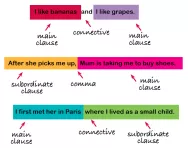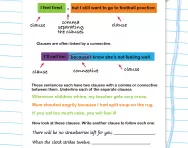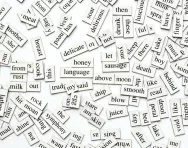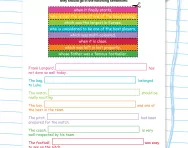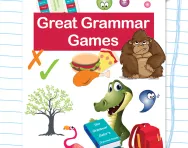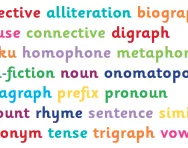Important update from TheSchoolRun
For the past 13 years, TheSchoolRun has been run by a small team of mums working from home, dedicated to providing quality educational resources to primary school parents. Unfortunately, rising supplier costs and falling revenue have made it impossible for us to continue operating, and we’ve had to make the difficult decision to close. The good news: We’ve arranged for another educational provider to take over many of our resources. These will be hosted on a new portal, where the content will be updated and expanded to support your child’s learning.
What this means for subscribers:
- Your subscription is still active, and for now, you can keep using the website as normal — just log in with your usual details to access all our articles and resources*.
- In a few months, all resources will move to the new portal. You’ll continue to have access there until your subscription ends. We’ll send you full details nearer the time.
- As a thank you for your support, we’ll also be sending you 16 primary school eBooks (worth £108.84) to download and keep.
A few changes to be aware of:
- The Learning Journey weekly email has ended, but your child’s plan will still be updated on your dashboard each Monday. Just log in to see the recommended worksheets.
- The 11+ weekly emails have now ended. We sent you all the remaining emails in the series at the end of March — please check your inbox (and spam folder) if you haven’t seen them. You can also follow the full programme here: 11+ Learning Journey.
If you have any questions, please contact us at [email protected]. Thank you for being part of our journey it’s been a privilege to support your family’s learning.
*If you need to reset your password, it will still work as usual. Please check your spam folder if the reset email doesn’t appear in your inbox.
What is an embedded clause?
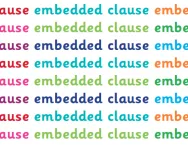
What is an embedded clause?
An embedded clause is a clause used in the middle of another clause.
In other words, an embedded clause is a clause (a group of words that includes a subject and a verb) that is within a main clause, usually marked by commas.
Information related to the sentence topic is put into the middle of the sentence to give the reader more information and enhance the sentence.
Commas are usually (but not always) used to separate the clause that has been embedded from the main clause.
If you removed the embedded clause the main clause would stand alone as a complete sentence. However the embedded clause is reliant on the main clause so it does not make sense on its own (it's a subordinate clause).
For example:
The coat, which was old, had a hole in the pocket.
The main clause makes sense on its own: The coat had a hole in the pocket.
The embedded clause doesn't make sense on its own: which was old
The embedded clause has to be supported and explained by the main clause in order to make sense.
An embedded clause usually begins using the words which, who or where and relates to the noun or pronoun in the main clause.

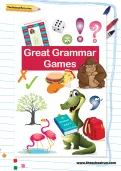
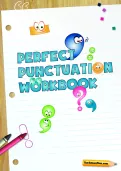
Watch your child's grammar confidence grow
- Perfect Punctuation Workbook
- Grammar Games Pack
- PLUS 100s of other grammar resources
When are embedded clauses taught in primary school?
In Year 2 children will be taught to use the term ‘clause’.
By Year 3 and 4 children are expected to begin extending the range of their sentences by using more than one clause in their writing. It is most likely that teachers will introduce the idea of an embedded clause to add information into children’s writing at this stage.
In Year 5 and 6 children should be confidently using a range of sentence types with more than one clause in their writing.
How will embedded clauses be taught in the classroom?
The national curriculum, which was revised in 2014, states that children should be explicitly taught grammatical terminology. Therefore, teachers will introduce the concept using the terms ‘clause’ and ‘embedded clause’.
The children will be shown examples and the teacher will model how to write and use embedded clauses correctly to the whole class or small groups.
The children may be given grammar activities to complete independently or in small groups such as:
- Identifying and highlighting examples of embedded clauses in a text or sentence.
- Adding given embedded clauses to simple sentences.
- Adding their own embedded clauses to simple sentences.
- Chopping up and manipulating sentences written on pieces of card.
- Writing their own embedded clauses when completing pieces of extended writing.
- Identifying or adding embedded clauses when editing their own pieces of extended writing.


